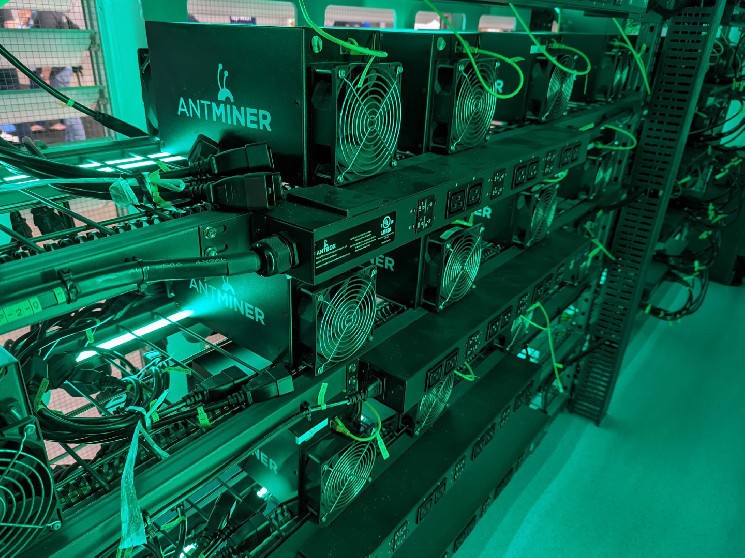Bitcoin Mining Companies Need to Better Manage Risk

This past year has created an unprecedented risk event for the Bitcoin community. While we’ve seen this level of spot price volatility before, the leverage within the mining community has reached record levels. This has compounded the effects of debt exposure with falling spot prices, increasing energy price and diminishing collateral value. Bad treasury management ran rampant in 2022 and led to a problem that financial hedges can solve and/or prevent.
The strategy many miners have used to manage treasuries up until this point has been relatively simple: buy and hold bitcoin. In other words, hope and pray. With price models often assuming an average of ~2% spot growth per month, and a price floor near the current average production cost between $18,000 and $22,000. Clearly those assumptions have not held true.
Nathan Cox is the chief investment officer at Two Prime, which offers structured products and derivative strategies for digital assets and risk management.
Machine financing in 2021 was deployed at record prices, when large orders came with long delays and profit margins were wide. As those orders were filled, and hash power continues to grow, hashprice has tested new all-time lows in 2022 and has already begun to test the durability of this long-leverage strategy. A close look at public miners’ U.S. Securities and Exchange Commission filings shows that many companies are in dire straights.
See also: Crypto Terms Become Dirty Words as Bear Market Lingers
Now miners have to face a difficult reality, can operational budgets survive a prolonged crypto winter?
The answer will not be the same across the board, and we have already seen several casualties of the new bear regime. Our concern is that bitcoin miners have over-exposed themselves, and now face potential liquidation if bitcoin prices remain depressed for an extended period of time.
So how do miners navigate this financial and operational minefield?
Miners must incorporate sophisticated financial strategies, in line with energy and commodity companies who have come before them. If bitcoin is indeed a commodity, then it’s time industry leaders start treating it like one by managing financial exposure with financial strategies.
For years, the oil and gas industry has used sophisticated risk management strategies and gold miners have used target redemption forwards (TARF), a structured financial contract that allows for the hedging of risk.
Miners too should be looking to reduce downside risk, replace upside beta and generate yield on their digital assets. These strategies are time-tested in traditional commodity markets, and have allowed major energy companies to consistently expand their operations for decades. Miners are recognizing this need, though it may be too late for some.
See also: Europe’s Last Bitcoin Mining Refuge Is No Longer Viable
With the current macroeconomic backdrop, rising interest rates, reduced liquidity and waning risk assets, it is time that the digital asset industry takes the necessary steps to weather this volatility and incorporate financial tools that will create sustainability and certainty. It is the appropriate behavior of any fiduciary running a bitcoin mining firm.
The digital asset industry has suffered major setbacks from leveraged borrowing without capital controls or risk management, and it is time we reconsider the long-term growth strategy for the industry. The solutions exist today to prevent further losses or liquidations, and it is our hope that miners have the constitution to evolve for a brighter future.
Learn more about Consensus 2023, CoinDesk’s longest-running and most influential event that brings together all sides of crypto, blockchain and Web3. Head to consensus.coindesk.com to register and buy your pass now.






 Bitcoin
Bitcoin  Ethereum
Ethereum  Tether
Tether  USDC
USDC  TRON
TRON  Dogecoin
Dogecoin  Cardano
Cardano  Bitcoin Cash
Bitcoin Cash  Chainlink
Chainlink  LEO Token
LEO Token  Stellar
Stellar  Monero
Monero  Zcash
Zcash  Litecoin
Litecoin  Hedera
Hedera  Dai
Dai  Cronos
Cronos  OKB
OKB  Tether Gold
Tether Gold  Ethereum Classic
Ethereum Classic  KuCoin
KuCoin  Gate
Gate  Algorand
Algorand  Cosmos Hub
Cosmos Hub  VeChain
VeChain  Dash
Dash  Stacks
Stacks  Tezos
Tezos  TrueUSD
TrueUSD  IOTA
IOTA  Basic Attention
Basic Attention  Decred
Decred  Theta Network
Theta Network  NEO
NEO  Synthetix
Synthetix  Qtum
Qtum  Ravencoin
Ravencoin  0x Protocol
0x Protocol  DigiByte
DigiByte  Zilliqa
Zilliqa  Nano
Nano  Siacoin
Siacoin  Numeraire
Numeraire  Waves
Waves  Ontology
Ontology  Enjin Coin
Enjin Coin  Status
Status  BUSD
BUSD  Hive
Hive  Pax Dollar
Pax Dollar  Lisk
Lisk  Steem
Steem  Huobi
Huobi  OMG Network
OMG Network  NEM
NEM  Augur
Augur  Bitcoin Gold
Bitcoin Gold  Bitcoin Diamond
Bitcoin Diamond  Ren
Ren